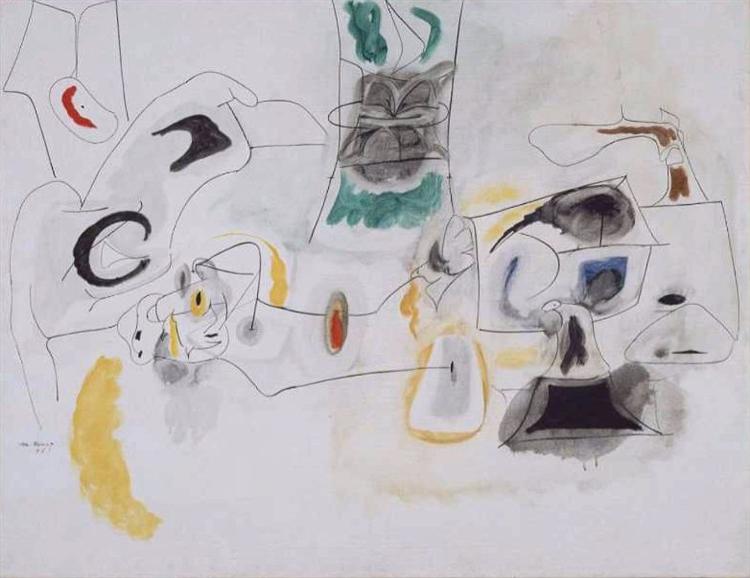Description
The work "Camino de la Good Esperanza" (Good Hope Road) by Arshile Gorky, painted in 1945, is a fascinating and complex manifestation of the postwar artistic panorama. This painting, which is within the context of abstract expressionism and surrealism, reveals the depths of the human experience and the concerns of its creator, an Armenian artist whose experiences were marked by violence and loss.
When observing the composition of the work, a dynamic game can be noted between organic and abstract forms. Gorky uses fluid lines that are intertwined in a framework that reminds of natural landscapes and environments, evoking a sense of movement and fluidity that is characteristic of its style. The forms seem to emerge from the surface of the painting, creating a sense of depth that invites the viewer to a more personal interpretation.
The use of color on "path of good hope" is also worth mentioning. Gorky uses a rich and vibrant palette, dominated by terrible, deep green and soft blue tones, which give the work an almost ethereal quality. Colors are not mere representative representations; Instead, Gorky uses them to evoke an emotion and an atmosphere that transcend the planned image. The color layers are applied almost pictorially, using techniques that suggest the overlap of experiences and memories.
In this painting, the human figure, although it is not represented literally, is implicitly present. Gatchy's emotional burden is felt, who often explored identity and belonging issues in his work. The lack of an explicit representation of the human being in "Camino de la Good Hope" could be interpreted as a reflection of alienation and the search for connection in a chaotic world, a narrative that is in the very tissue of expressionism.
Gorky, as part of his exploration in art, was interested in the relationship between art and memory. "Way of good hope" can be seen not only as a representation of a physical place, but also as a metaphor for the personal and cultural trajectories that we all face. By coming from a background of suffering and displacement, Gorky infuses his work with a genuine search for hope, a journey that is both physical and spiritual.
Finally, "Way of Good Hope" is inscribed in the legacy of modernist art, where the boundaries between the abstract and the figurative are blurred. Gorky's work has been a significant influence on later generations of artists, highlighting the importance of personal expression and emotional depth in art. His ability to intertwine experiences of the past with a sense of yearning for what is to come converts this painting into a powerful example of the ability of art to communicate the complexity of the human condition.
KUADROS ©, a famous paint on your wall.
Hand-made oil painting reproductions, with the quality of professional artists and the distinctive seal of KUADROS ©.
Art reproduction service with satisfaction guarantee. If you are not completely satisfied with the replica of your painting, we refund your money 100%.

